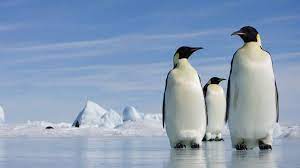Antarctica: A new study has found that seals and penguins living in Antarctica are getting sunburned easily due to the hole in the ozone layer (ozone layer) . This hole, which usually lasts over Antarctica for a few months, has now persisted for more than a year. Professor Robinson, who studies climate change, is concerned by this research published in Global Change Biology. He is worried about the continued absence of this protective shield.
She says that when I tell people I work on the ozone layer, they say: ‘Oh, isn’t it better now?’ He also said that a major reason for the thinning of the ozone layer is the smoke released from the terrible Australian forest fires, which started from the forest fire.
hole in the ozone layer..
Scientists first noticed a hole in the ozone layer over Antarctica in 1985, and they discovered that chemicals called chlorofluorocarbons (CFCs) were causing it. In 1987, countries around the world agreed to stop the use of these chemicals, creating the Montreal Protocol.
Although the ozone layer has begun to recover, environmentalists are worried because the hole returns every year over Antarctica, where the ozone layer is already very thin. The size of the ozone hole varies throughout the year, expanding and shrinking as weather and temperature change.
Typically, it begins to open in August, reaches its widest point around October, and then closes by the end of November. However, scientists have noticed that it remains open longer, extending into the Antarctic summer, when wildlife is most at risk.
UV radiation..
Increased exposure to ultraviolet radiation from the sun increases the risk of skin cancer and cataracts in humans, but it is still uncertain whether the same applies to animals such as mammals and birds in Antarctica. But perhaps the biggest threat to Antarctic animals is damage to the eyes,” said Professor Robinson.
These changes are also affecting the plants and animals of Antarctica. For example, krill, which is a small sea creature, is moving deeper into the ocean to avoid harmful ultraviolet rays. This is affecting the food supply for seals, penguins and other birds that depend on krill. Scientists say that the ozone hole’s persistence for a long time is a warning sign. They suggest that experiments be conducted to cool the climate and reduce the impact of climate change on Antarctica.
 Indian Thought Latest News & Views
Indian Thought Latest News & Views



